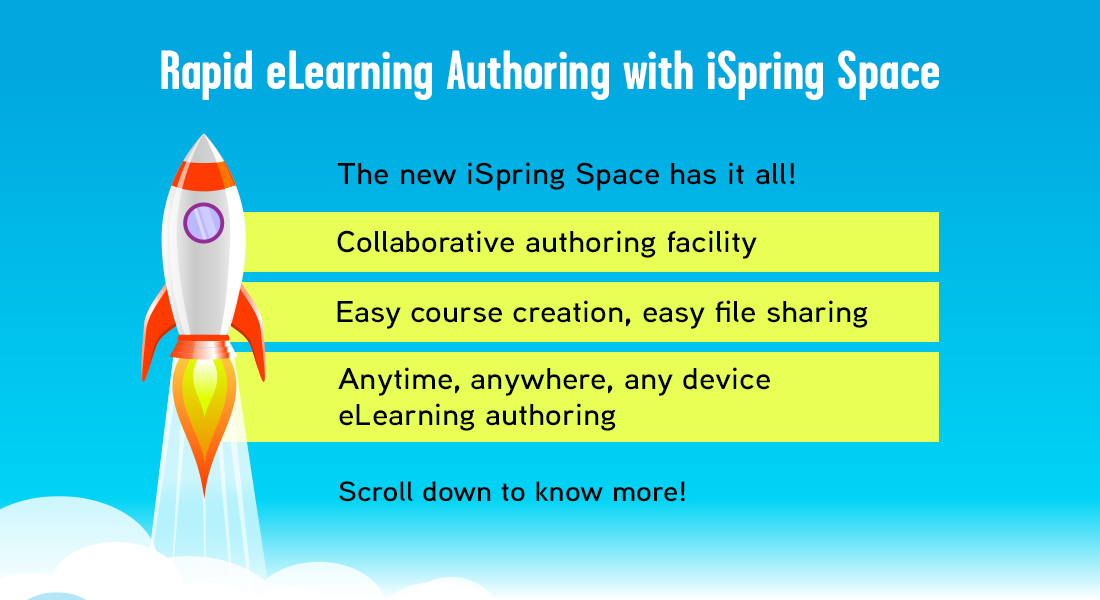4 Reasons Adobe Captivate is the Best Tool When Outsourcing eLearning Development
The task of choosing an authoring tool often decides the fate of the eLearning endeavor. In this blog, let’s see how Adobe Captivate holds up against other authoring tools in terms of features and robustness.

Is your training dynamic enough to accommodate the unpredictable shifts and changes of today’s business landscape? Many companies have time and again realized that there is no other way than to adapt to these shifts and changes that shape the corporate scenario. In order to succeed in such a competitive game, today’s employees need to have skills and competencies, which also means that the learning (or online learning) offered must be agile and impactful. This is where outsourcing comes in.
To offer high-quality training, companies partner with eLearning vendors to produce innovative online learning solutions. These vendors with their immense experience in learning and design – and most importantly expertise in using authoring tools – create eLearning courses that are aligned with your business requirements.
In most cases, you will be tasked with the responsibility to choose the “right” authoring tool. The problem however, is that there are far too many eLearning authoring tools available today, and choosing the right one becomes all the more important.
Adobe Captivate is one such interactive authoring tool that packs the biggest punch. Let’s see why you should prefer – when you are outsourcing eLearning – Adobe Captivate over other authoring tools.
1. Create Software Simulations for Experiential Learning
A huge advantage of Adobe Captivate, and probably the reason it’s the darling of courseware designers, is its screen capture ability. If part of your learning involves training employees on a new software application, then this feature will surely impress you. It lets you capture all mouse motions, navigations, and typing activity on-screen.
Unlike a How-to tutorial, these simulations created using the screen capture – a mimic of the application – can be used to train learners on the different features of the application or process, thereby providing ample room for experiential learning. Employing simulations also avoids serious consequences of experimenting on the actual workflow of the application at hand, which is another added benefit. Learn more about simulations here.
2. Provide Learners the Benefits of Responsive eLearning
The world literally runs on Smartphones today. Modern workforce, composed of millennials, roots for technology that allows them to access learning content at the comfort of their mobile devices. Seamlessly optimized courses are something training managers should be able to count on in their list of requirements. It is imperative to build courses that run seamlessly on multiple devices.
Adobe Captivate lets you easily create responsive eLearning courses that work on any device – desktop, laptop, tablet, or mobile; and in any orientation—horizontal or vertical. When your learner opens the course, the course adjusts itself to the dimensions and the type of device it is being viewed on, dynamically, providing optimum viewing of the content on the page.
3. Offer Learning in More than One Language
Multinational organizations are increasingly expanding their businesses in countries across the world. This global presence of organizations also entails employees who speak different languages. Multi-language learning for such organizations spread globally becomes a matter of paramount importance.
Creating a course from the scratch is not a feasible option, both in terms of cost and time. Adobe Captivate, with its support for the translation of eLearning courses into multiple languages (such as Spanish, French, Chinese among others including left-to-right languages such as Arabic and Urdu), stands out among the other authoring tools. By making your eLearning courses multilingual, Captivate opens up your learning content to a globally dispersed audience. What’s more? Developing the course in local languages also results in maximum comprehension and impact.
4. Create Section 508 Compliant E-learning
Adobe Captivate possesses the ability to create eLearning courses that are compliant with Section 508 for employees who have visual, hearing, mobility, or other types of disabilities.
For users with hearing impairment, Captivate lets you add text equivalents for audio elements. If your eLearning contains rich visual multimedia, Captivate can provide information about the multimedia for users with visual impairment on the screen reader (JAWS, or Job Access with Speech, from Freedom Scientific, is one example of a screen reader).
All in all, Adobe Captivate is a master tool when it comes to creating high quality eLearning materials. It checks all boxes as far as quality and robust features are concerned.
In the same vein, one must also understand that though these authoring tools are termed “easy-to-use” “robust” tools, they do require sound instructional design expertise. Adobe Captivate is surely a tool that requires minimum programming or technical knowledge to make use of its unique features, but what compels most companies to outsource learning solutions is the depth of experience working with authoring tools and the cost-time effectiveness that eLearning vendors bring to the table. As the old saying goes, “experience counts more than anything”.





